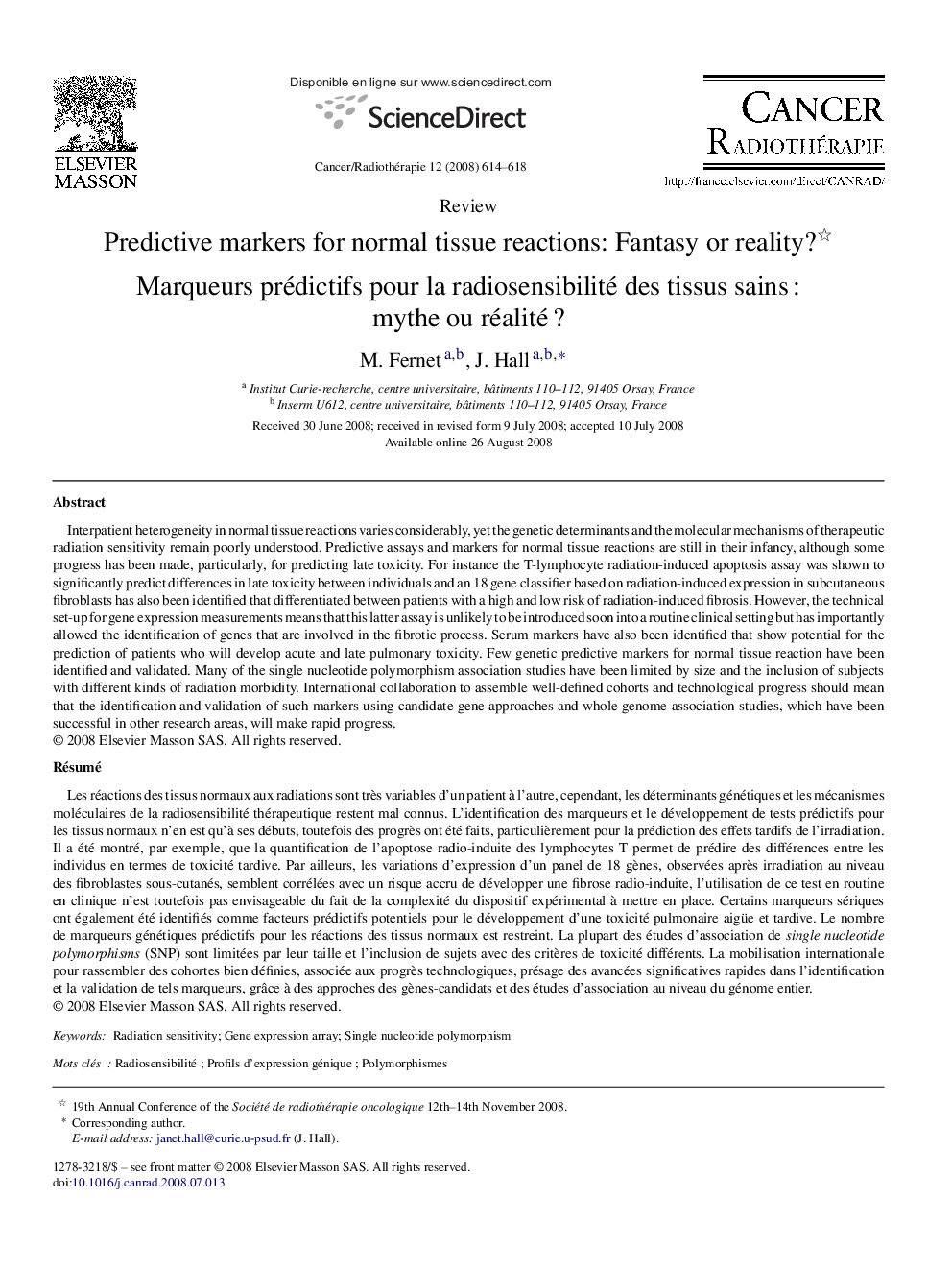| کد مقاله | کد نشریه | سال انتشار | مقاله انگلیسی | نسخه تمام متن |
|---|---|---|---|---|
| 2118749 | 1546741 | 2008 | 5 صفحه PDF | دانلود رایگان |

Interpatient heterogeneity in normal tissue reactions varies considerably, yet the genetic determinants and the molecular mechanisms of therapeutic radiation sensitivity remain poorly understood. Predictive assays and markers for normal tissue reactions are still in their infancy, although some progress has been made, particularly, for predicting late toxicity. For instance the T-lymphocyte radiation-induced apoptosis assay was shown to significantly predict differences in late toxicity between individuals and an 18 gene classifier based on radiation-induced expression in subcutaneous fibroblasts has also been identified that differentiated between patients with a high and low risk of radiation-induced fibrosis. However, the technical set-up for gene expression measurements means that this latter assay is unlikely to be introduced soon into a routine clinical setting but has importantly allowed the identification of genes that are involved in the fibrotic process. Serum markers have also been identified that show potential for the prediction of patients who will develop acute and late pulmonary toxicity. Few genetic predictive markers for normal tissue reaction have been identified and validated. Many of the single nucleotide polymorphism association studies have been limited by size and the inclusion of subjects with different kinds of radiation morbidity. International collaboration to assemble well-defined cohorts and technological progress should mean that the identification and validation of such markers using candidate gene approaches and whole genome association studies, which have been successful in other research areas, will make rapid progress.
RésuméLes réactions des tissus normaux aux radiations sont très variables d’un patient à l’autre, cependant, les déterminants génétiques et les mécanismes moléculaires de la radiosensibilité thérapeutique restent mal connus. L’identification des marqueurs et le développement de tests prédictifs pour les tissus normaux n’en est qu’à ses débuts, toutefois des progrès ont été faits, particulièrement pour la prédiction des effets tardifs de l’irradiation. Il a été montré, par exemple, que la quantification de l’apoptose radio-induite des lymphocytes T permet de prédire des différences entre les individus en termes de toxicité tardive. Par ailleurs, les variations d’expression d’un panel de 18 gènes, observées après irradiation au niveau des fibroblastes sous-cutanés, semblent corrélées avec un risque accru de développer une fibrose radio-induite, l’utilisation de ce test en routine en clinique n’est toutefois pas envisageable du fait de la complexité du dispositif expérimental à mettre en place. Certains marqueurs sériques ont également été identifiés comme facteurs prédictifs potentiels pour le développement d’une toxicité pulmonaire aigüe et tardive. Le nombre de marqueurs génétiques prédictifs pour les réactions des tissus normaux est restreint. La plupart des études d’association de single nucleotide polymorphisms (SNP) sont limitées par leur taille et l’inclusion de sujets avec des critères de toxicité différents. La mobilisation internationale pour rassembler des cohortes bien définies, associée aux progrès technologiques, présage des avancées significatives rapides dans l’identification et la validation de tels marqueurs, grâce à des approches des gènes-candidats et des études d’association au niveau du génome entier.
Journal: Cancer/Radiothérapie - Volume 12, Issues 6–7, November 2008, Pages 614–618